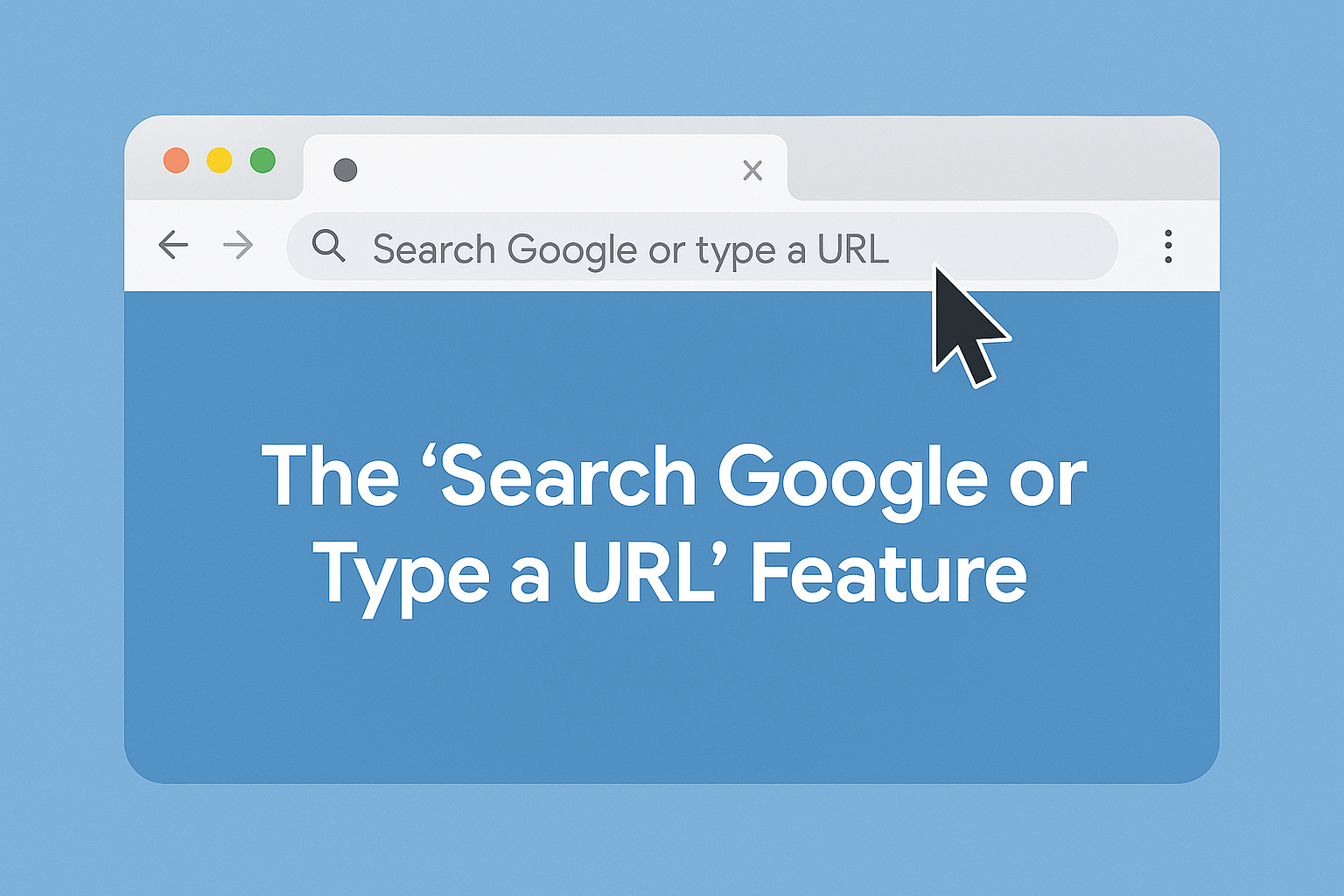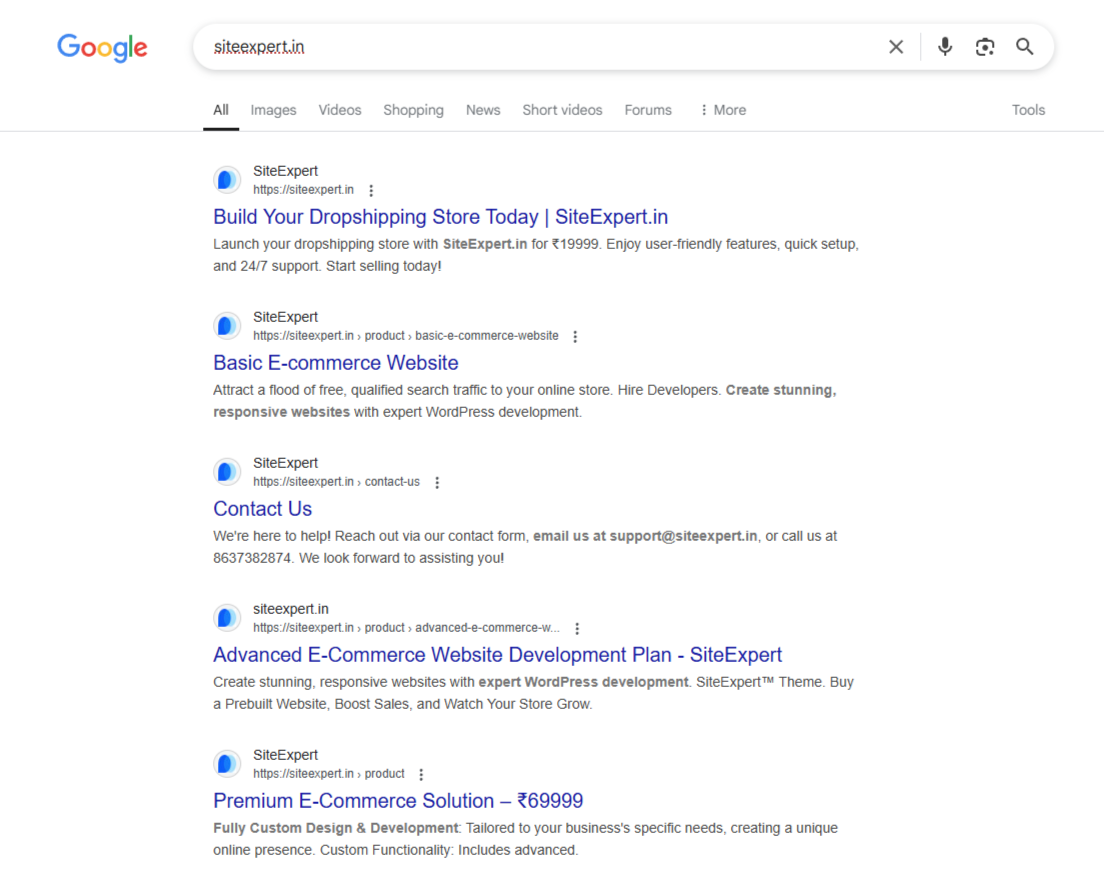Search Google or Type a URL

What Does Search Google or Type a URL Really Mean?
The phrase “Search Google or type a URL” refers to the two primary ways users can navigate the internet, and it’s prominently seen on most modern web browsers. As one of the world’s most powerful search engines, Google has continually evolved to offer more intuitive and accessible tools for web navigation. With its latest updates, the user experience has become even more seamless, allowing people to either search for content using keywords or directly type a website address (URL).
At SiteExpert, we understand that simplicity is key when it comes to digital navigation. That’s why we highlight features like this—tools designed to help users find information quickly, even if they’re not tech-savvy. This functionality bridges the gap between expert and casual internet users by offering a streamlined browsing experience.
Here’s how it works:
-
Search Google: Type in keywords or questions related to what you’re looking for. The search engine delivers a list of websites and resources that match your query.
-
Type a URL: If you already know the exact web address, you can enter it directly into the browser’s address bar to go straight to the desired site.
This dual functionality is standard across all major browsers including Google Chrome, Mozilla Firefox, Microsoft Edge, and Safari. Whether you’re browsing for information or accessing a specific site like SiteExpert, these methods make internet use more efficient and user-friendly. ( Check out our work Website : Buyon.in / Weftkart.com etc)
What Is an Omnibox and How Does It Work?

The Omnibox is a smart, multi-functional tool built into modern web browsers that allows users to either search online or type a website address (URL) directly. Commonly recognized as the feature that displays the phrase “Search Google or type a URL,” the Omnibox streamlines browsing by combining search functionality and web navigation into a single input field.
At SiteExpert, we believe in simplifying digital experiences. That’s why we appreciate tools like the Omnibox—especially helpful for users who might not be familiar with traditional search engines. Whether you’re trying to find information or go directly to a known website, this tool saves time and effort.
But the Omnibox goes beyond just browsing. It can also:
-
Perform quick calculations
-
Convert units (e.g., inches to centimeters)
-
Provide instant answers to common queries
Just type what you need, and either press Enter to search or type in the full URL to visit a site instantly.
While different browsers and devices might display slightly varied text—like “search or type web address”—the core functionality remains the same. Whether you’re exploring new content or heading to a familiar page like SiteExpert, the Omnibox helps you get there faster and smarter.
How to Search for a Specific Word or Phrase on Google
Searching for a specific word or phrase on Google is simple and effective when done right. All you need to do is enter your query into the Omnibox (the browser’s address bar), and you’ll instantly get a list of relevant results. For more accurate outcomes, you can use quotation marks (“”) around your search terms to find an exact match.
Example:
If you’re looking for local options, type:
best shoe stores near me
You’ll get a curated list of nearby stores based on your location and Google’s ranking.
Want to search within a specific website? Use the site: operator. This is useful when you’re trying to find something on a particular domain.
Example:
To find all mentions of the word Omnibox on a website, type:
site:siteexpert.in Omnibox
This will show all pages from SiteExpert that include the word “Omnibox.”
Using these smart search techniques can save time and help you find exactly what you’re looking for—whether it’s general info or something very specific.
Which Method Is Better: Search or Type a URL?
When it comes to using the “Search Google or type a URL” feature, there’s no single right or wrong approach. The best method simply depends on what you’re trying to do and how familiar you are with the content you’re looking for.
-
If you’re unsure about the exact website or just exploring information on a topic, using Google search by typing keywords into the address bar is your best bet.
-
On the other hand, if you already know the specific URL, typing it directly into the address bar can save time and take you straight to the destination.
At SiteExpert, we value tools that enhance user efficiency and experience—and this feature does exactly that. Whether you’re a casual user or a power browser, the “Search Google or type a URL” functionality helps streamline your browsing and improve your search speed.
In short, it’s not about choosing one over the other—it’s about using the method that best fits your current need.
How to Search a Website on Google — Smart Operators You Should Know?

Searching within a website using Google is one of the most efficient ways to find targeted content. Whether you want to locate specific information on a domain or explore related websites, Google offers several advanced search operators that make your task much easier.
🔍 1. Search Within a Website Using site:
To search for something on a specific website, use the site: operator.
Example:site:siteexpert.in Omnibox
This command shows all indexed pages from SiteExpert that mention the word Omnibox.
🔗 2. Discover Related Websites with related:
The related: operator shows websites that are similar in content or structure to another website.
Example:related:siteexpert.in
This gives a list of websites similar to SiteExpert, helpful for competitive research or content ideas.
ℹ️ 3. View Website Info with info:
Want basic meta-information about a site? Use info:.
Example:info:siteexpert.in
Google will show details like the page title, snippet, and related links.
💾 4. View Cached Version with cache:
Use cache: to view the most recent version of a webpage stored by Google. This is helpful when a website is temporarily down.
Example:cache:siteexpert.in
🔁 5. Find Backlinks with link:
Although not as strong as it once was, the link: operator can still sometimes help discover pages linking to a specific site.
Example:link:siteexpert.in
🌐 6. Find URLs Containing Specific Words with inurl:
This operator helps find websites with a certain word in the URL.
Example:inurl:expert
Google will show you URLs that include the word “expert.”
🏷️ 7. Find Page Titles with Specific Words Using intitle:
To locate pages with specific words in their title tags, use intitle:.
Example:intitle:Omnibox
You’ll get pages where the word “Omnibox” appears in the page title.
Final Words from SiteExpert
These advanced Google search operators aren’t just for SEO professionals—they’re for anyone who wants to search smarter. At SiteExpert, we encourage users to explore these tools for better navigation, competitive analysis, and content discovery.
Search Google vs. Type a URL – What’s the Real Difference?
In most modern browsers, you’ll see the phrase “Search Google or type a URL” in the address bar—also known as the Omnibox. But what’s the difference between the two actions? Let’s break it down with simple examples.
🔍 1. Search Google — When You Don’t Know the Website URL
When you search Google, you’re entering a keyword or phrase to find websites that match your query.
Example:
Typing best phone under 20000 will show you a list of websites comparing affordable smartphones.
This method is perfect when:
-
You’re not sure of the website name
-
You want multiple sources to choose from
-
You’re searching for general information
🌐 2. Type a URL — When You Know Exactly Where You Want to Go
Typing a URL (e.g., siteexpert.in) into the address bar takes you directly to that website without going through search results.
Use this when:
-
You know the exact website address
-
You want to skip Google results and go directly
🧠 Bonus: Combine Google Search with Smart Operators
Sometimes, you want to search inside a specific site or find certain types of files. Here’s how:
📄 Find PDFs on a Site
site:example.com filetype:pdf
➡️ Lists all PDF documents from the site.
🖼️ Find Images (e.g., JPG)
site:example.com filetype:jpg
➡️ Returns only image results with JPG format.
🎥 Find MP4 Videos
site:example.com filetype:mp4
➡️ Filters video content from the site.
✅ Final Verdict by SiteExpert
-
Use “Search Google” when you want suggestions, options, or don’t know where to start.
-
Use “Type a URL” when you’re confident about where you’re going.
The Omnibox makes both options available in one place—making browsing smoother and smarter for everyone.
What Are Google Autocomplete Predictions & How They Help You?

When you begin typing in the Google search bar, you’ll notice that suggested phrases start appearing below it. This time-saving feature is called Google Autocomplete Predictions.
It’s not just a convenience tool—it’s also a powerful resource for users and content creators alike.
🔍 How Google Autocomplete Works
As soon as you start typing, Google uses an intelligent algorithm to suggest search queries based on:
-
✅ Your search history
-
✅ Trending searches across the web
-
✅ Frequently searched and related terms
-
✅ Real-time user behavior
Example:
Type shoe and you may see:
➡️ shoe store
➡️ shoe rack
➡️ shoe size chart
You can click on any suggestion to search instantly, or continue typing your specific query.
✨ Why It’s a Game-Changer
⏱️ Saves Time
It reduces typing and helps users reach accurate results faster.
🧠 Improves Search Intent
Users often discover more relevant search queries they didn’t even think of initially.
🔑 Boosts SEO Strategy (For Website Owners Like You!)
If you’re a content creator or business owner, Google Autocomplete can help you:
-
Discover popular keywords your audience is already searching for
-
Optimize blog posts and product pages using real, proven search terms
-
Create content that aligns with user demand
📝 Fixes Spelling Errors Instantly
Start typing a complex word, and Google Autocomplete helps complete it—spelled correctly.
🧠 SiteExpert Tip:
Want to dominate search rankings? Use autocomplete predictions to build a list of high-intent keywords, then craft content around those terms. It’s like getting SEO suggestions directly from Google itself!
How Do Google Autocomplete Predictions Work?
Whenever you start typing in the Google search bar or browser address bar, you’ll notice a list of suggestions pop up instantly. These are called Google Autocomplete Predictions—and they’re smarter than you might think.
🔍 What Powers Google Autocomplete?
Google uses a combination of personal data and global trends to generate predictions. The algorithm pulls suggestions from:
-
🔄 Your past searches
-
🌐 Popular and trending searches from across the web
-
📍 Location and language settings
-
👣 Websites you’ve visited before
So if you and thousands of others have searched something similar before, Google learns from that behavior to improve predictions for future users.
🔒 Want More Privacy? You Can Turn It Off
If you’d rather not have personalized suggestions, you can disable the tracking:
-
Find “Web & App Activity”
-
Toggle it off to stop Google from saving your search and browsing activity
📌 Note: Even after turning this off, some data may still be saved temporarily for technical reasons, but it won’t be used to personalize suggestions.
🧹 Clear Your Search History Anytime
If you want a fresh start, you can manually delete your search history:
-
Go to your Google Account > Data & Privacy > History
-
Select Web & App Activity
-
Click “Manage all Web & App Activity”
-
Choose Delete activity by day, product, or all time
🚀 SiteExpert Tip:
Use Google Autocomplete strategically by typing in part of your keyword and seeing what people are actually searching for. It’s a free, powerful way to discover content ideas and boost SEO.
How “Search Google or Type a URL” Enhances Your Browsing Experience
The “Search Google or type a URL” feature in modern browsers isn’t just convenient—it’s a smart way to browse faster, search better, and even support your content creation or SEO work.
⏱️ 1. Save Time with Instant Predictions
This feature helps you reach the right website or search result without typing everything.
-
Typing “am” might take you directly to Amazon.
-
Start typing a keyword, and Google Autocomplete shows suggestions instantly.
The more you use it, the smarter it gets—making your daily browsing lightning fast.
✍️ 2. Great for Quick Research (Perfect for Bloggers!)
Doing research? This feature helps you pull high-quality sources in seconds.
✅ Example:
Want government PDFs? Try:site:.gov filetype:pdf
✅ Want academic reports? Try:site:.edu filetype:pdf
This gives you direct access to PDFs on government or educational sites—perfect for writers, students, or marketers doing research.
🌐 3. Boosts Your SEO Strategy
As a content creator or website owner, using this bar helps you discover:
-
Trending keywords
-
Related websites
-
Content ideas through Google suggestions
Just typing a few letters shows you what users are already searching for, helping you align your content with real-world search behavior.
🔁 4. Effortless Navigation to Frequent Sites
If you regularly visit specific websites, this tool learns your habits.
Just type a few letters and hit Enter—it’s like a shortcut to your favorite sites without needing bookmarks.
💡 SiteExpert Tip:
Combine this feature with advanced Google operators like site:, filetype:, inurl:, and intitle: to supercharge your search game.
Conclusion
The “Search Google or type a URL” feature is an invaluable tool that streamlines your online experience. Whether you’re researching new topics, trying to boost your website’s visibility, or just navigating the vast amount of information on the internet, this feature helps you find what you need faster.
By using Google search, you can instantly access relevant information, and by typing a URL directly in the address bar, you can go directly to a site without delay.
This simple yet powerful tool is essential for anyone who spends time online. It speeds up browsing, makes finding information easier, and saves valuable time.






